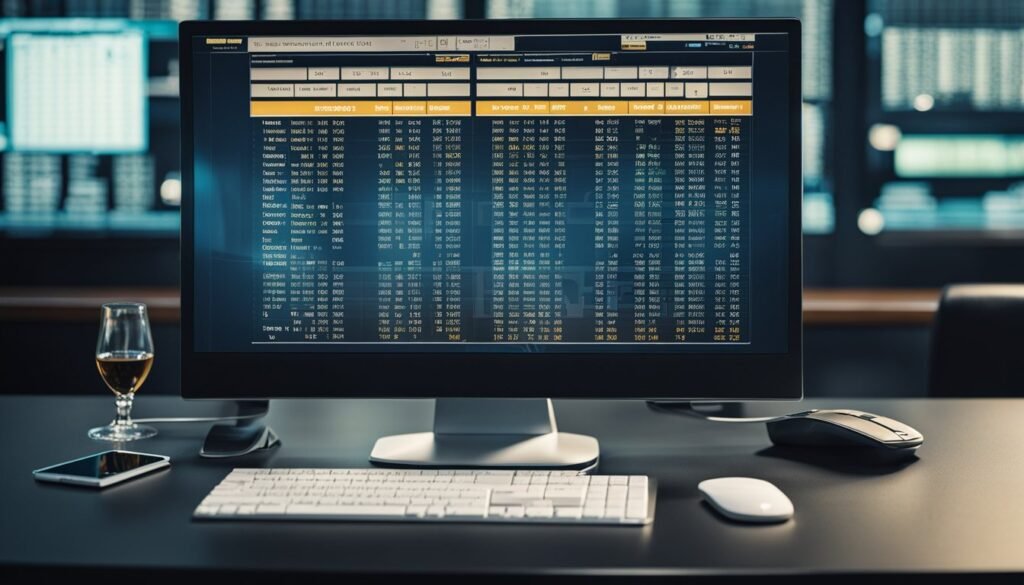Understanding Pokies RTP
Return to Player (RTP) is a term that specifies the percentage of all wagered funds that a pokie game returns to players over time. It is a measure of the theoretical payout level and is shown as a percentage. Generally, it accounts for a vast number of spins, sometimes even millions.
Take, for example, a pokie with a 95% RTP. Over time, for every $100 placed in bets, the machine is expected to pay back $95, while the remaining $5 is the casino's profit. An increase in RTP usually signifies a better return potential for the player.
| RTP (%) | Interpretation |
|---|---|
| Below 94 | Considered low for online |
| 94-96 | Average for online |
| Above 96 | Competitive and player-friendly |
In the digital realm, online pokies often present more attractive RTPs than those in physical casinos, where surpassing a 92% RTP is uncommon. Awareness of a pokie's RTP is useful for players when contemplating long-term results, although it does not assure success in any given session.
Factors Influencing RTP:
- Game design and features
- Operational Elements of Casinos
- Regulatory requirements
A comprehensive understanding of RTP mechanics enables players to pick games matching their style and betting limits. Though it's a useful framework for a balanced gaming session, it should be seen as a guideline, not an absolute rule.
Factors Influencing Pokies RTP

Various influences affect the Return to Player (RTP) of pokies, tied to aspects such as game design, legal stipulations, and the player's skill level.
Game Design and Complexity
Factors like the likelihood of hitting winning combinations and the resulting payouts majorly shape the RTP during the pokie's development. Simple games may exhibit different RTPs compared to complex games with bonus rounds or multipliers.
Regulatory Requirements
Adherence to regulatory constraints by gaming authorities also affects RTP. For instance, Australian casinos must meet certain RTP standards, ensuring equitable and open gambling practices.
Player Skill Level
While pokies are primarily luck-based, a player's skill can also have an impact on RTP. Games that offer decision-making and strategy opportunities may exhibit varying RTPs depending on player choices.
Methods of RTP Calculation

Return to Player (RTP) quantifies the percentage of all stakes placed on pokie machines returned to players over an extended period. RTP calculations involve statistical methods, crucial for both players and casinos in gauging a game's potential return.
Theoretical RTP stems from the game's design, representing the total cash wagered on a machine, with deductions for the casino's profit. It considers every possible outcome on an Electronic Gaming Machine (EGM) to guarantee comprehensive results.
Real-World RTP involves analysis of pragmatic data. Some Australian territories require total wagering and return data collection, such as the annual assessment of all EGMs in a location per the Gambling Regulation Act 2003 (Victoria).
- RTP Through Simulation : This approach uses computer simulations of extensive gaming sessions to predict a game's RTP over a prolonged duration.
Key factors in RTP evaluation include the game type and regulatory directives, as methods differ. Evaluating RTP ensures games adhere to fairness and payout standards, yet it's vital to consider that RTP represents a long-term average, not an individual session guarantee.
Analysing RTP for Pokies Selection

When deciding on pokie machines, informed players often deem Return to Player (RTP) a critical factor, as it indicates the expected percentage returned to players over time. A higher RTP generally suggests a more favorable game for users.
Key Considerations in RTP Analysis:
- Theoretical Return Percentage : RTP offers a rough estimate over many game plays, rather than a precise expectation.
- Casino Margin : An RTP of 96% implies the casino retains a 4% profit margin.
RTP Examination Steps for Pokie Choices:
- Spot the RTP : Identifying the RTP is the initial step. Casinos sometimes display RTP information, which can also be found within the game's details.
- Rate Comparison : Conversely examine machines with higher RTPs, typically falling between 92% to 98% in Australia.
- Consider Variability : Keep in mind a high RTP doesn't assure victories; variability also plays a significant role.
Practical Assessment:
| Game Title | RTP | Variance |
|---|---|---|
| Game A | 97% | High |
| Game B | 94% | Medium |
| Game C | 96% | Low |
To conclude, machines with higher RTPs are generally more advantageous for players. However, players should also weigh game variability and personal preferences in determining risk and gameplay styles. RTP evaluation is part of a comprehensive strategy for wise pokie selection, which includes grasping bankroll management and game dynamics.
Mastering Strategies for Engaging with High RTP Pokies
For those aiming to heighten their chances on the pokies, opting for games with a higher Return to Player (RTP) is a vital tactic. RTP signifies the percentage of betting money that returns to players over time, making games with elevated RTP appealing.
Finding High RTP Games:
Players should seek pokie games with an RTP of 97% or above. This data is typically accessible on the game developer's platform or within the game's descriptive materials.
Bankroll Management:
A prudent bankroll strategy encompasses determining and observing a betting ceiling. Players should gamble within their limits and resist attempting to recover losses, even on high RTP pokies.
Understanding Game Variance:
Game variance impacts how frequently payouts occur. High variance correlates with bigger, sporadic wins, whereas low variance indicates more frequent, smaller rewards. Players should align their choice with their style and financial range.
Maximise Your Play:
To fully capitalize on high RTP games, it's advisable to wager the maximum allowable amount when feasible. Maximum bets might unlock additional perks or rewards that potentially boost winnings.
When to Stop:
Maintaining discipline is crucial, such as establishing a profit goal and halting once it's met. Similarly, understanding when to cease after continuous losses is wise, no matter the RTP.
RTP Auditing and Certification
The Return to Player (RTP) serves as a significant metric for evaluating pokie fairness. Displaying the percentage of total betting amounts paid back over time, processes for certification and auditing are fundamental to sustaining confidence in the gaming sector.
Regular evaluations of pokie machines by certification bodies like iTech Labs ensure that casinos' RTP announcements coincide with outcomes over an ample sample period.
The Audit Procedure encompasses multiple layers:
- Information Gathering: Auditors amass comprehensive logs of game actions and results.
- RTP Calculations: Using statistical methods, auditors compute the real RTP from the data obtained.
- Randomness Verification: Analyzing the Random Number Generator secures unbiased and random results.
When audits affirm compliance, pokie machines and operators receive pertinent certificates, reflecting adherence to industry norms, thereby reassuring players of game integrity.
Openness is vital, with audited outcomes typically shared with players, directly or through summaries accessible on the casino's site.
While RTP provides theoretical insight, individual gameplay may differ due to variability and short-term fluctuations.
Casino and software firms often highlight their audit credentials to showcase their dedication to fair gaming practices, fostering player confidence.
Impact of Volatility on RTP
In pokie discussions, the factors of Return to Player (RTP) and volatility are pivotal considerations for many players. RTP reveals the average return to players over an extensive period, whereas volatility indicates the game's risk level.
- High Volatility: Characterized by less frequent yet more substantial payouts, high volatility pokie machines appeal to those hoping for notable, albeit less common, wins.
- Low Volatility: These pokies offer a steadier flow of smaller wins, suiting players seeking a less risky and more predictable experience.
Assuming a straightforward relation between volatility and RTP needs nuance. High and low volatility pokies might have identical RTP, yet their payout sequences differ. RTP remains constant over an extensive spin count, typically millions, without projecting short-term results.
Calculated as a percentage, RTP normally spans 94% to 99%. For instance, a machine showing a 96% RTP indicates an average return of $96 for every $100 wagered. Crucially, RTP serves as a theoretical estimate rather than a personal payout guarantee.
Volatility does not determine the overall Return to Player (RTP) percentage; instead, it influences how winnings are distributed and how frequently they occur. When selecting a slot machine, players should take into account both the RTP and the level of volatility to ensure it aligns with their gaming preferences and acceptable level of risk.
A Comparison of RTP in Land-Based Versus Online Slot Machines
In examining slot machine return-to-player (RTP) rates, one can observe a distinct difference between physical, land-based casinos and virtual, online settings. Online slots generally offer higher RTP rates than those found in traditional, physical casinos. This trend is largely attributed to the reduced operating costs online casinos shoulder compared to their brick-and-mortar counterparts.
Land-based slot machines typically feature RTP percentages that can vary significantly, though they often sit between 87% and 90% . These machines demand substantial physical real estate and upkeep, contributing to a smaller share of bets being returned to players over time.
Conversely, online slots often boast RTP rates that are more player-friendly, frequently spanning from 92% to 98% . Given that these games operate in a digital space, the overheads are lower, allowing online casinos to offer more lucrative returns. It's not uncommon for online gamers to encounter slot games with RTP rates exceeding 95% , considerably boosting their chances of winning over the long haul compared to land-based gaming establishments.
Below is a simplified table for comparison:
| Platform | RTP Range | Notable Features |
|---|---|---|
| Land-Based | 87% – 90% | Lower RTP attributed to the higher costs of operation and upkeep |
| Online | 92% – 98% | Higher RTP due to decreased operational expenses |
Players seeking to optimize their potential gains might find online slots more desirable. However, they must always check the RTP of individual slots, as these figures can fluctuate across different games, irrespective of the platform.
Common Myths and Misunderstandings About Slot RTP
Within the realm of online slot machines, the concept of Return to Player (RTP) is frequently mentioned but is often surrounded by a haze of myths and false beliefs.
- Guaranteed Returns : One prevalent misunderstanding is that a high RTP ensures a win soon. In reality, RTP is a theoretical projection based on extensive gameplay and a multitude of spins, and it is not a forecast of immediate payouts.
- Due for a Win : There's a narrative among some players that if a slot hasn't paid out recently, it's 'due' for a significant win. This is a misconception; slot machines rely on a Random Number Generator (RNG), meaning each spin is independent of previous ones.
- Changing Odds : Casinos get accused of altering RTP as they see fit, but the truth is that RTP is established by the game's creator and cannot be adjusted at will by the casino if the game is properly licensed.
- Bonus Rounds Influence : Players often assume bonus features and jackpots have superior RTPs, but typically, such features adhere to the game's overall RTP, though the RTP of individual sessions may differ greatly.
| Myth | Fact |
|---|---|
| Games flaunting higher RTP percentages always yield larger payouts | RTP is a theoretical model hinging on long-term activity |
| A slot is destined for a win following a dry spell | Each spin is random and independent |
| Casinos hold the power to modify RTP rates at their discretion | RTP is determined by the developers and remains immutable by the casino |
| Bonus rounds and jackpots come with separate RTP calculations | These elements are normally factored into the game's general RTP |
Dispelling these myths is vital for players intent on setting realistic expectations when they engage with online slots.
Improving Player Awareness of RTP
Players often dive into slot games without possessing a complete grasp of what the Return to Player (RTP) rate entails and how it can impact their gaming experience. Understanding RTP is crucial as it helps players identify the expected return on their bets over extended play. A higher RTP suggests a greater likelihood of recouping a portion of their wagers.
Methods to Enhance Player Insight:
- Education : It's important for casinos and game creators to provide straightforward explanations of RTP within the help or information sections of their games.
- Transparency : Prominently displaying RTP figures on both digital platforms and physical gaming machines can aid players in making informed choices.
- Guidance : Customer support staff should be trained to elucidate the concept of RTP and its implications clearly to players.
Useful Tips for Players:
- Verify RTP rates prior to engaging with a slot machine.
- Target games with a superior RTP (ideally above 97%).
- Bear in mind that a high RTP does not mean guaranteed wins but points towards a better chance of winning over time.
By boosting awareness of RTP and its effects on gaming results, players can make strategic choices regarding which slots match their ideal balance of risk and reward. Casinos play a part in enriching the gaming journey through education, ultimately cultivating a more informed player community.
Frequently Asked Questions
In the pursuit of understanding slot machine mechanics better, players frequently explore questions about how these machines operate and what their chances of winning are. Here, we answer some common questions regarding Return to Player (RTP) percentages and related matters in the context of Australian slot machines.
What factors dictate the payout percentage for slot machines in Australia?
In Australia, the payout percentage, commonly referred to as Return to Player (RTP), of slot machines is determined by the software programming of each game, which must adhere to regulations imposed by governing bodies. These regulations guarantee that machines deliver an acceptable level of payouts over time to maintain fair gaming practices.
Is it possible for players to alter the Return to Player (RTP) on electronic gaming machines?
Players are unable to modify the Return to Player on electronic gaming machines as the RTP is a predefined statistical figure ingrained in the machine's software, unaffected by any player-developed strategy, timing, or frequency of play.
What strategies are best for maximizing wins on slot machines?
To maximize potential winnings on slot machines, players should seek machines that boast higher RTP rates, as these statistically provide a better chance of profitability over time. Additionally, a grasp of the game's volatility—which dictates how often and how much it pays out—can also aid players in choosing a machine that fits their comfort level concerning risk.
Are the payout rates for slot machines made public or governed in Australia?
In Australia, payout rates for slot machines are subject to regulation, with legislation in each state or territory specifying a minimum RTP that must be observed by gaming machines. Nonetheless, the exact RTP for individual machines isn't always disclosed, complicating players' efforts to discover the payout rates of specific slots.
What traits typify high-paying slot machines?
Slot machines noted for offering high payouts usually feature a higher RTP percentage, indicating that a greater portion of the total bets will be returned to players over time. Additionally, such machines might exhibit low to medium volatility, resulting in more frequent but less significant wins.
Does the bet amount influence the probability of winning on slot machines?
The probability of securing a win on slot machines doesn't directly hinge on the size of the bet, since RTP and the game's randomness remain consistent across all wager amounts. Yet, some titles may reserve progressive jackpots or bonuses for higher bets, indirectly impacting the payout construction.
Author
Meet Benjamin Mitchell, known in the gaming circles as \"AceGambler\", an expert from Sydney, Australia, boasting over 20 years of online casino experience. With a foundation in Statistics and keen strategic insight, he investigates game fairness, payout percentages, security, and user experiences. Benjamin's penetrating reviews empower players to make informed decisions in online gambling, while always championing responsible gaming. Outside his professional pursuits, he spends quality time with family, indulges in photography and jazz, and engages with communities through forums and blogs. In a dynamic digital casino landscape, AceGambler remains a constant guide for selecting the best online gaming options.
View all posts
Share:






